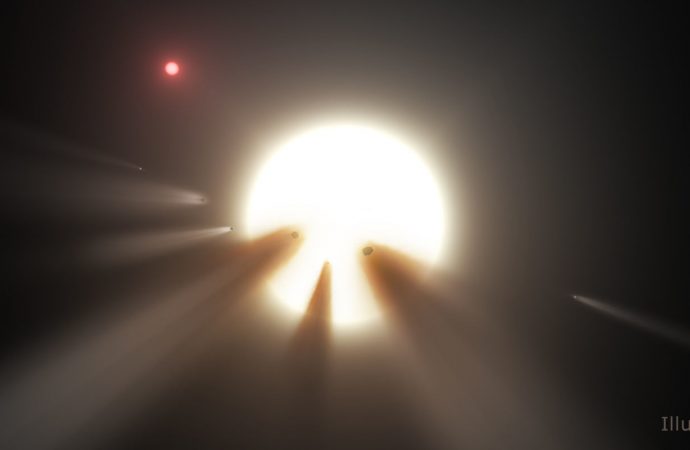Tabby’s star, famous for its inexplicable dips in brightness, is going through one of those dips right now.
As far as weird stars go, few are as strange as KIC 8462852, nicknamed Tabby’s star. Tabby’s star randomly dims and brightens for apparently no reason, which led some astronomers in 2015 to hypothesize that some sort of ‘alien megastructure’ was orbiting the star, occasionally blocking the light. Other scientists proposed a large asteroid field or a swarm of comets instead, but we still don’t really know what’s going on.
All of that might be about to change. Early this morning, astronomers detected one of those characteristic dips that are unique to Tabby’s star. All of the other dips that we know of are from historical observations, but this one is happening right now, which gives astronomers a chance to really figure out what’s happening.
But in order for that to happen, we need to point a telescope—or ideally several—in the direction of Tabby’s star as soon as possible. This can be a challenge due to the way that telescope time is proportioned. Telescope time is usually scheduled months or years in advance, and it’s not always easy to reschedule something at the last minute.
If this were any other star, getting even one telescope at such short notice would be nearly impossible. But Tabby’s star is not a normal star, and its behavior is such a puzzle that multiple telescopes will be able to fit in at least a few observations. The Swift space telescope has already scheduled multiple observations of the star at various times tomorrow, and a number of other telescopes around the world are planning to squeeze in an observation or two.
The most important thing for these telescopes to capture is the spectrum of Tabby’s star. The spectrum of a star is all the light that star produces broken down by the color of that light. Looking at the spectrum of a star can tell you what it’s made of. For instance, a star containing only hydrogen will be a different color and have a different spectrum than a star burning both hydrogen and helium.
And the spectrum of Tabby’s star might be able to tell us what’s causing the strange dimming effect. Different materials block different wavelengths of light, so looking at the spectrum of the star before and after the dimming could tell us what’s blocking the light. If scientists see more blue light blocked than red light, for instance, that could mean the dimming is caused by lots of dust.
There’s also the possibility that the dimming could be caused by comets, or by gas outside the star system entirely. In that case, common components of these materials like water and hydrogen will block specific parts of the spectrum, which we should be able to see. If the dimming is caused by something solid like a planet—or an alien megastructure—then the spectrum will be dimmed evenly across the board.
The Kepler telescope, which scientists used to initially spot Tabby’s star’s weird dimming, only measures brightness, not spectra. And by the time we realized how weird Tabby’s star is, it was too late for us to get the spectrum from another telescope. This is our first chance to really find out what’s going on with Tabby’s star.
And there’s a good chance that with these new observations we’ll finally be able to solve this puzzle at last.
Source: Popular Mechanics

































Leave a Comment
You must be logged in to post a comment.